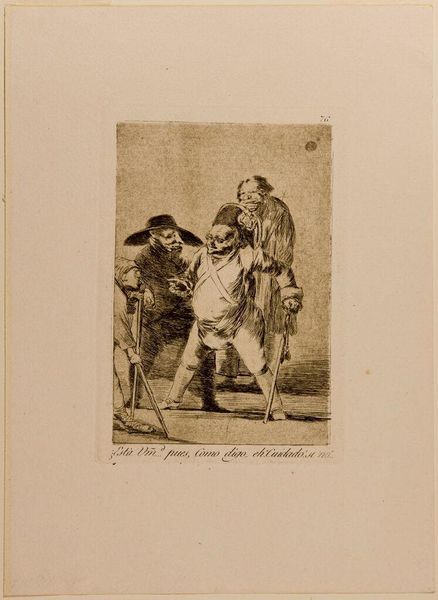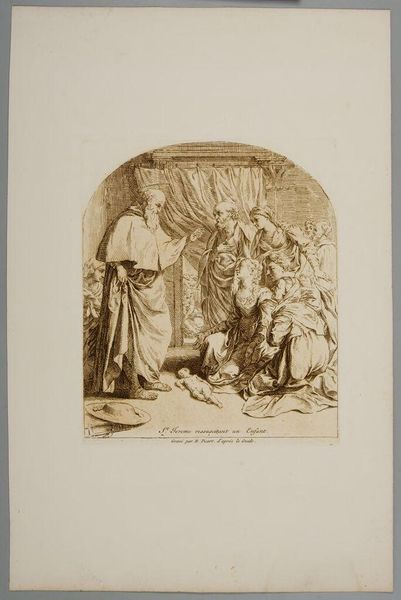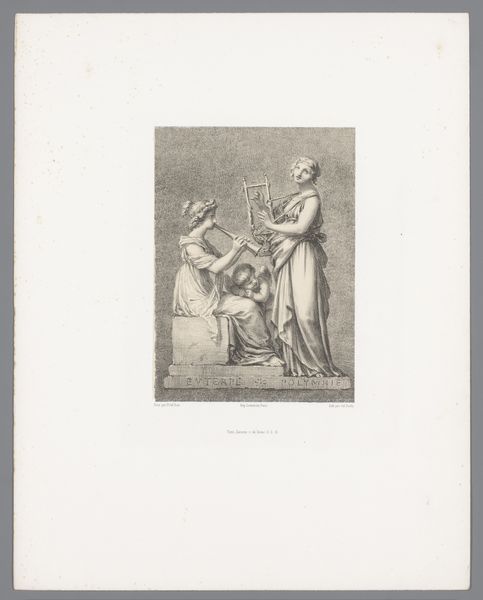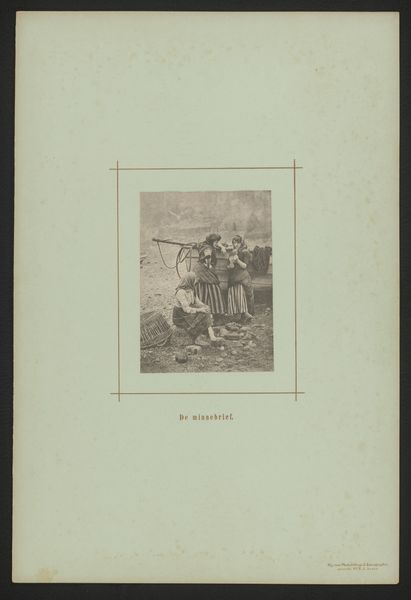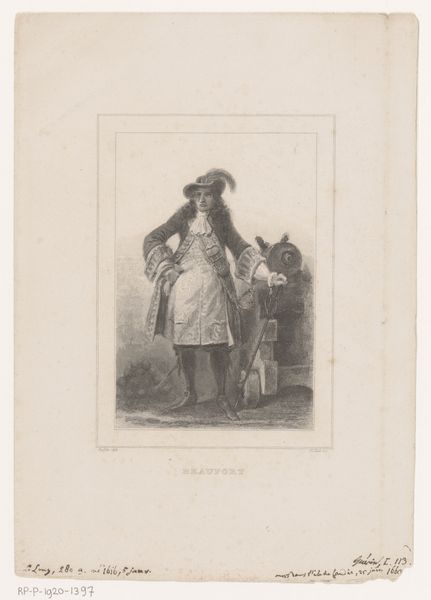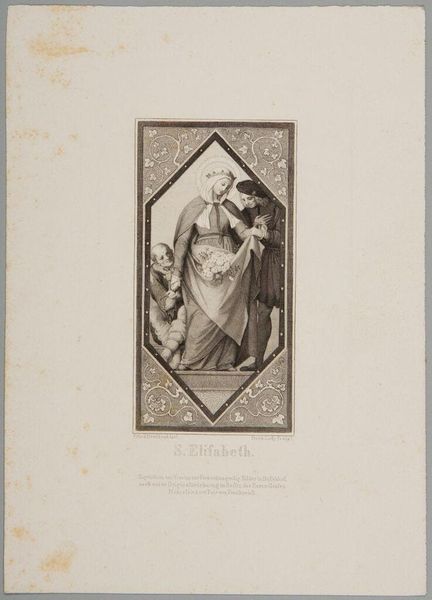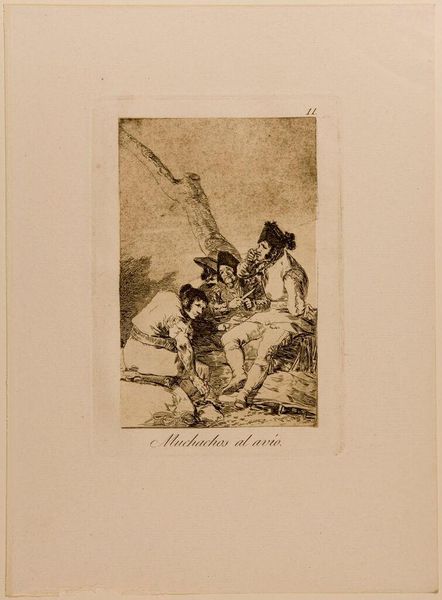
Copyright: CC0 1.0
Curator: It's a somber composition, isn't it? The stark contrast between light and shadow seems to suggest a protective, but also burdened, atmosphere. Editor: This is "Angelus Custos" by Xaver Steifensand. Considering Steifensand's life, born in 1809, this piece resonates with the 19th-century anxieties about childhood innocence and vulnerability amid rapid social changes. Curator: Indeed. The angel's guardianship isn't merely spiritual; it speaks to the very real precarity faced by children in that era, especially within unequal socioeconomic structures. Is the child meant to represent any particular social class? Editor: Possibly, or perhaps the child is a universal symbol of innocence needing protection. The angel's gesture and the cross on their chest suggest faith as the primary shield. Note how the angel is composed within a descending diagonal line. Curator: The angel is posed to lead the child away from some kind of path, and the child is seemingly oblivious to the dangers. Are we meant to believe the angel is intervening with destiny? Editor: The symbolism is strong, but it also directs our gaze along those diagonal lines, from the angel’s wing down to the child’s outstretched hand. Curator: Ultimately, it’s a poignant reminder of our shared responsibility to safeguard the well-being of future generations. Editor: A beautifully balanced, yet fraught image.
Comments
No comments
Be the first to comment and join the conversation on the ultimate creative platform.
